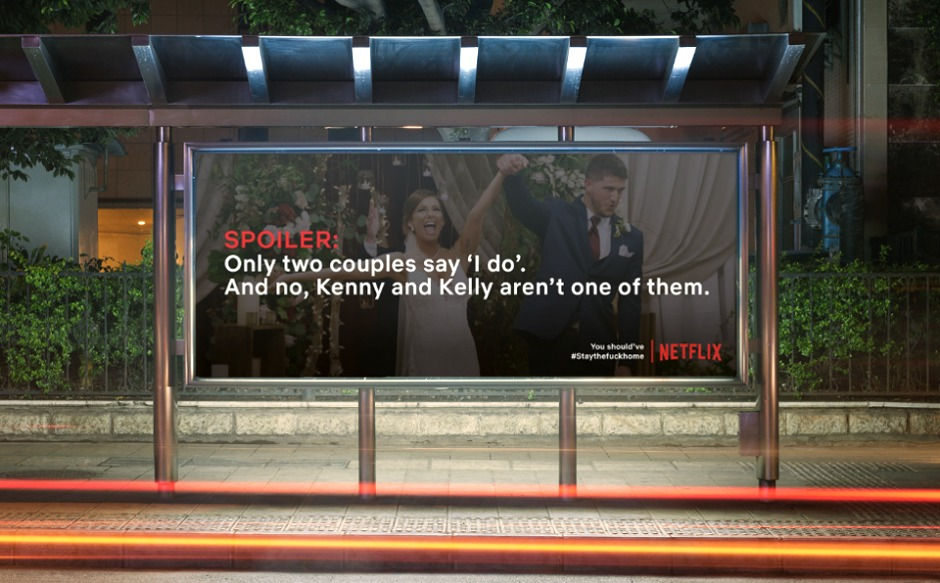The changing face of advertising
- kalyani naravane
- Apr 29, 2020
- 6 min read
Updated: Jun 15, 2020
How, a pandemic that has gripped the world, has given advertising one of its most challenging
yet opportune times.
It is an interesting time for brands all over the world. The coronavirus pandemic has caused an overhaul in consumer behaviour, priorities and decision making, at least for the time being. Production is low and communication has emerged as the need of the hour. Everyday, across the globe, I see organisations struggling to keep themselves in business, right from the travel and hospitality industry to the FMCG, technology and automobile sector. Brand perception is also at a precarious stage. Organisations are looking to boost their social media presence and keep themselves relevant in the current circumstances. However, they need to tread carefully.
Brands have to be cautious regarding what they say and how they say it, now more than ever. Advertising campaigns and social media communication will have to be reimagined to avoid being perceived as aggressive, insensitive or that which makes light of a global catastrophe. In advertising, there has always been a thin line between making a bold move and going too far. And today, organisations cannot afford to take that risk. The prevalent pandemic has shaken up the world at large and people have suffered immensely, in every respect. A campaign that comes across as taking advantage of this grim situation is not going to be taken lying down. Consumers today are opinionated, vocal about how they feel (good and bad) and not hesitant to take action. Insensitive or unwise communication will be remembered, for the wrong reasons. And so will the brand that it represents. Speaking on the subject in their paper What Does Coronavirus Mean For Brands on Social Media, Carly Gibson and Renata Mittnacht from Ogilvy LLP opine, "Consumers are not just questioning brands about advertising but also about their core values, how they are treating their employees and factory workers, and how they are contributing to the cause." They recommend that brands take this moment to re-evaluate their approach to social media marketing, steer away from hard-sell content that directly promotes a product and shift focus to how their brand can provide value for consumers.
I feel, given the nature of present circumstances, bringing sensitivity into brand campaigns is going to be crucial. Nike's new ad, “Play inside, play for the world.” in response to the stay at home initiatives being taken the world over, was a great way to connect on an emotional level with an audience and promote the brand's values in parallel. Another creative intervention to promote social distancing and show a commitment to public safety was made by the Swiss brand, Chiquita. Altering their logo, they removed the brand mascot Miss Chiquita, with a caption that read “I’m already home. Please do the same and protect yourself.” Netflix, on the other hand, among other online streaming portals have retracted from any kind of advertising, since that could definitely come across as taking advantage of a situation that people cannot change. However, I came across an interesting campaign concept for Netflix, by students from the Miami Ad School Europe in Germany, Seine Kongruangkit and Matithorn Prachuabmoh Chaimoungkalo. It took a completely out-of-the-box approach to promote stay-at-home by printing spoilers of original Netflix shows, as brand ads on bus stops and public spaces! Ouch! Alternatively, Nissan Middle East took the middle ground between actively campaigning for their product and staying completely silent. Its latest ad, 'An ode to empty roads' achieves the dual purpose of maintaining brand presence as well as being contextual and socially responsible.


Brand campaigns have the ability to range from the emotional to the unconventional, but they all need to be very certain that along with feeding their brand image, they in no way are making the error of being inappropriate. KFC for example paused its latest “Finger Lickin’ Good” campaign in the U.K. for obvious reasons. Concerns that the ads encouraged customers to lick their hands couldn't have been more ill-timed! Similarly, US beer brand Coors Light had to stop their campaign “Official Beer of Working Remotely,” amid concerns that it looked like it was taking advantage and making light of the precautions many companies are now taking in mandating working from home. Vogue had a similar product idea with their work-at-home pyjamas that left me a little confused as to whether they were being serious or sarcastic about the current situation that we found ourselves in. Not an ideal dilemma consumers would like to find themselves in. Meanwhile, Hershey’s played extra cautious and pulled a few new ads that featured human interaction, including hugging and handshakes, keeping the current sensitivities surrounding COVID-19 in mind. In a health crisis of this magnitude, consumers are bound to get highly sensitised to situations, and that may cause them to be more unforgiving than normal circumstances. Organisations and advertising agencies creating campaigns have to be aware of this reality. For instance, Indian brand Amul, which is known for its creativity and a tongue-in-cheek approach to advertising, got caught up in a divided audience on its recent ad. Although the depiction of Indians being brought back from Wuhan and the play of words was enjoyed by some, there was a large number who thought it was in bad taste.


Apart from classic advertising techniques, organisation are finding new ways of reaching out to their audiences without getting phased out. Many industries have slowed down, since the demand for basics is at an all time high. But strategies like Instagram Live sessions with celebrities, free screenings and tutorials ranging from softwares to recipes are doing the rounds. Museums have introduced virtual tours and online sessions on art and exhibitions. Musicians are engaging in 'live' concerts on social media platforms whereas virtual collaborations that were never explored are being experimented with! Valentino's creative director, Piccioli, posted a simple photograph of himself at home, on Instagram with a personal caption that talked of hope and a better tomorrow. It felt good, one remembers who did it and there arises an association with the brand he represents. Consumers like such personal connections on social media platforms rather than direct marketing techniques. Vic Drabicky, founder and CEO of strategy and branding agency January Digital, admits that the coronavirus puts brands and companies in a difficult spot. They do need to keep in touch with consumers, to a degree. Unfortunately, there is “absolutely no one right way, but there are hundreds of wrong ways” to do it!

Janet Balis from Ernst & Young LLP, in her article Brand Marketing Through the Coronavirus Crisis makes an important point. She says that "feel-good content that alleviates anxiety and promotes positive messaging will go a long way to enhancing the brand. However, companies need to show that their contributions are material and not solely for commercial benefit. Consumers recognise authenticity and true purpose." For instance, I learnt of LVMH Moët Hennessy Louis Vuitton’s decision to scrap luxury perfume production and make hand sanitizer, which to me, is a perfect example of what she describes. The LVMH Perfumes and Cosmetics business directed its production sites to manufacture substantial quantities of hydro-alcoholic gel that was subsequently provided to public authorities. All the production facilities of the group’s perfumes and cosmetics brands, including Parfums Christian Dior, Guerlain and Parfums Givenchy, produced and distributed bottles of hand sanitiser to be delivered free of charge in France. Other companies like Apple, Nike, The Estée Lauder Cos., Facebook and many others have also been donating millions of dollars, medical supplies and masks to those facing a critical shortage. Other creative initiatives by organisations include Jetblue, the American low-cost airline, that is flying medical professionals and supplies free of charge, Dyson who are now manufacturing ventilators and Jaguar & Land Rover who have planned to deploy more than 160 vehicles to organisations like the Red Cross and the NHS. While these efforts don't fall under standard advertising techniques, doing something on this scale with a genuine humanitarian bent creates a positive image for the brand, and no doubt helps the world at large. It is to me a classic win-win situation.
Although it is important to be visible even at a time like this, I believe prudence is key. We are working with human emotions and they are being put to the test with the ongoing pandemic. Researchers have found that incidental emotions often pervasively carry over from one situation to the next, affecting decisions that should, from a normative perspective, be unrelated to that emotion*. Harvard Professor Gerald Zaltman also talks about this from the point of view of consumer behaviour in his book, How Customers Think: Essential Insights into the Mind of the Market. He says, emotion is what really drives purchasing behaviours, and also, decision making in general, emphasising on the fact that humans are driven by feelings. For a consumer to remember a product or brand, they must be engaged and impassioned by the interaction with the organisation. And I believe this applies to a great extent in the current circumstances. It is a tough time for everyone. It is tricky to gauge how an audience will react to a certain message. Brands all over the world are trying to create campaigns that are creative, memorable and impactful. It is important, however, to err on the safer side, than be caught making an insensitive faux pas that could be catastrophic. As the classic saying goes, "sell the sizzle, not the steak."
References:
https://adage.com/article/cmo-strategy/7-brands-ads-unfortunately-timed-coronavirus-pandemic/2244631












Comments